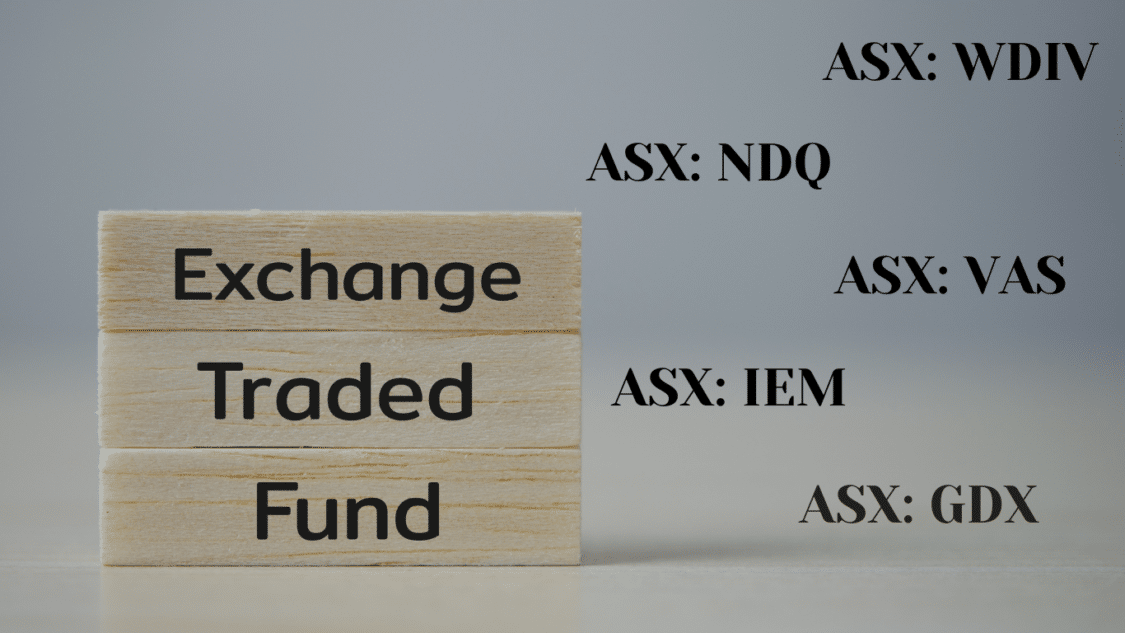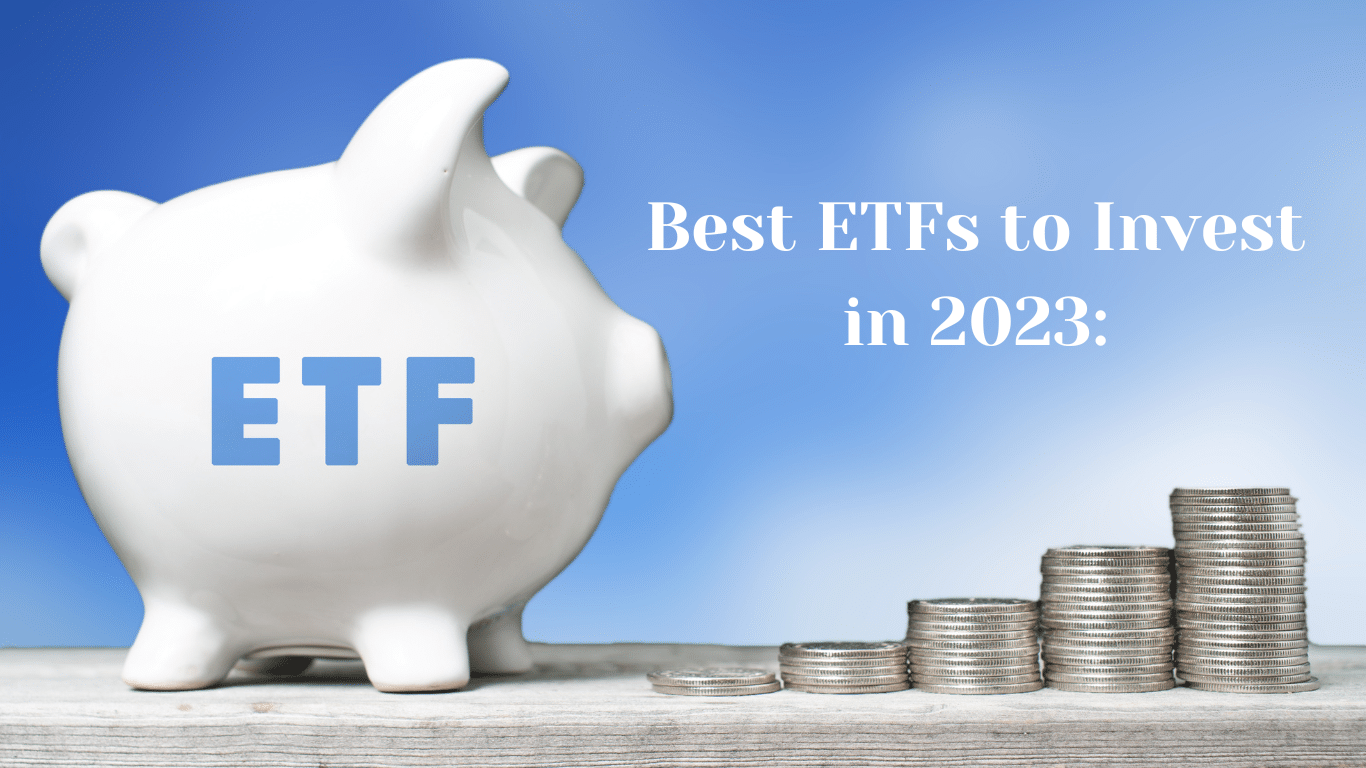Looking toward 2023, investors are searching for the best ETFs to invest in 2023 and help capitalize on the economy’s recovery altogether. While there are always uncertainties in the industry, such as inflation, geopolitical risks, environmental concerns and technological complications, investors must diversify their portfolios and capture the best investment options for 2023. This article will present you with the best ETFs to invest in 2023.
ETFs – One of the Optimal Investment Options for 2023:
Exchange-traded funds (ETFs) have become popular as a low-cost and easy way to obtain exposure to various asset classes. Compared to standard mutual funds, these funds provide more diversity, liquidity, and cheaper costs making it a great answer for what to invest in 2023.
The following are the best ETFs to invest in 2023:
Invesco S&P 500 Equal Weight Real Estate ETF (EWRE): This ETF provides access to real estate businesses within the S&P 500 by following the S&P 500 Equal Weight Real Estate Index. The real estate sector has potential for expansion, with the economy recovering, lower interest rates, and increased demand for housing and commercial buildings.
SPDR S&P Regional Banking ETF (KRE): This ETF tracks the S&P Regional Banks Select Industry Index’s performance, primarily focusing on regional banks in the United States. Regional banks will likely gain from increasing loan demand and rising interest rates as the economy grows stronger.
iShares MSCI International Quality Factor ETF (IQLT): The IQLT ETF seeks to imitate the MSCI World ex USA Sector Neutral Quality Index, which chooses firms from developed markets outside of the United States based on quality attributes such as strong return on equity, low debt, and consistent growth earnings. In turbulent or unpredictable markets, quality equities tend to outperform.
iShares MSCI United Kingdom ETF (EWU): This ETF resembles the performance of the MSCI United Kingdom Index, which includes firms listed in the United Kingdom. The United Kingdom is anticipated to rebound from the Brexit, and COVID-19 shocks thanks to a robust vaccination program, a free trade agreement with the EU, and a fiscal stimulus package.
Freedom 100 Emerging Markets ETF (FRDM): This ETF exposes emerging markets’ strong development potential by following the Life + Liberty Freedom 100 Emerging Markets Index, which chooses emerging market nations according to their human and economic freedoms.
Considering Investment Options for 2023:
In addition to ETFs, there are several other worthy investment options for 2023:

Gold: Gold, for years to come, has been seen as a safe-haven asset, offering protection against inflation, declining currencies, and geopolitical threats. Gold will likely see an increase in price in 2023 due to sustained inflationary pressures and rising demand from emerging countries. Physical gold, coins, and jewellery are all options for investors, as are ETFs such as SPDR Gold Shares (GLD).
Euro: The euro is predicted to rise compared to the US dollar in 2023, owing to a positive economic outlook. The European Union’s practical immunization efforts, ambitious green transition plans, and historic recovery funding add to the euro’s favourable mood. Currency exchange, bank deposits, and ETFs such as Currency Shares Euro Trust (FXE) are all ways investors invest in the euro.
Real Estate: The real estate industry is expected to expand in 2023 as demand for residential and commercial structures recovers. Real estate investments generate income, possible financial appreciation, and inflation protection. Investors might consider direct ownership, mortgages, real estate investment trusts (REITs), or exchange-traded funds (ETFs) such as the Vanguard Real Estate ETF (VNQ).
Technology Stocks: Technology stocks have been at the frontier of market leadership thanks to rapid digital change and innovation. Technology stocks provide development potential and competitive advantages due to ongoing improvements in industries such as software, hardware, the web, e-commerce, AI, cloud computing, biotechnology, and fintech. For further exposure to this sector, investors could look into individual firms, mutual funds, or exchange-traded funds (ETFs) such as ProShares UltraPro QQQ (TQQQ).
Navigating Investment Opportunities:
To invest in ETFs or other investment options for 2023, follow these steps:
- Establish your investment goals, define your investment amount, and assess your risk tolerance. This will help you make your investment decisions more efficiently and, in the long run, help you decipher your best investment options for 2023.
- Compare the funds or investment options available based on their performance, prices, objectives, holdings, and ratings. Gather comprehensive information using web tools, financial news sites, and consulting financial professionals.
- Choose a reliable broker or fund company that you can put your trust into and open an investment account that follows your beliefs and investment goals.
- Once the account is set up, invest in the ETFs or other investment alternatives you decide on. Place orders through your broker or fund provider as market orders executed at the current price or limit orders setting a target price.

- Review your portfolio consistently and rebalance it to suit your desired asset allocation. Consider reinvesting dividends and capital gains to gain more profits. However, avoid excessive trading and focus on long-term investment strategies.
- Create an exit strategy for how to sell your investments eventually. Consider tax consequences, fees, and market circumstances. Assess and change your portfolio regularly based on your goals and the market’s state.
However, it is crucial to note that typical trading hours may not always give the best timing for making your trades. This is where pre-market trading should be considered. Pre-market trading is purchasing and selling stocks before the stock market’s regular trading hours. This is generally from 4:00 am to 9:30 am Eastern Time in the United States. However, certain brokers may provide extended hours. Investors might use pre-market trading to respond to news events, earnings releases, or analyst ratings that may impact the price of a stock during the regular session. Pre-market trading, on the other hand, entails more risks and expenses than regular trading, such as less liquidity, wider spreads, and increased volatility.
Assume that a company reports better-than-expected results after the market closes on Monday. Bullish investors may wish to buy the stock in the pre-market period on Tuesday, expecting to profit from a possible price gain when the market opens. Bearish investors, on the other hand, may look to sell the stock in the pre-market session, anticipating a decrease in demand and price.
However, buyers and sellers may encounter difficulties locating sufficient counterparties to execute their deals and paying greater fees to their brokers. Furthermore, price swings in the pre-market session may not accurately represent the stock’s supply and demand in the regular session, as more investors and traders engage in the latter. As a result, pre-market trading necessitates rigorous research, risk management, and investor discipline.
What is the best ETF to buy in Australia?
We have chosen some of the best ETFs to invest in 2023 in Australia.
- BetaShares NASDAQ 100 ETF (ASX: NDQ): This fund works to track the performance of the NASDAQ 100 Index, which comprises the 100 largest non-financial firms listed on the NASDAQ stock market in the United States. The index is dominated by huge technological companies like Apple, Microsoft, Amazon, Tesla and other forward-thinking firms in biotechnology, consumer services, and media. Over the last five years, the fund has returned 25.8% per year, carrying a risk of 19.2%, a Sharpe ratio of 1.34, an expense ratio of 0.48%, 103 worth in holdings, and an approximate daily trading volume of $16.4 million.
- Vanguard Australian Shares Index ETF (ASX: VAS): Vanguard Australian tracks the performance of the S&P/ASX 300 Index and contains the top 300 companies listed on the Australian Securities Exchange (ASX). They provide broad exposure to numerous sectors such as financials, minerals, healthcare, and consumer staples, covering roughly eighty per cent of the Australian stock market. Over the last five years, the fund has returned 10.7% per year while risking 14.9%, with a Sharpe ratio of 0.72, an expense ratio of 0.10%, roughly 301 holdings, and an average daily trading volume of $63.9 million.
- iShares Core MSCI Emerging Markets ETF (ASX: IEM): This fund’s goal is to track the performance of the MSCI Emerging Markets Index. Including big and mid-cap firms from 27 emerging market nations, including China, India, Brazil, and Russia. The index covers about 85% of the developing market equities universe and provides exposure to high-growth prospects and diversification advantages. Over the last five years, the fund has returned 11.6% per year while risking 17.1%, with a Sharpe ratio of 0.68, an expense ratio of 0.67%, and 1404 holdings, holding an average daily trading volume of $2 million.

- SPDR S&P Global Dividend Fund (ASX: WDIV): Monitoring the performance of the S&P Global Dividend Aristocrats Index, which includes firms that have grown their dividends for at least ten years. The index, which includes established and emerging economies, seeks to deliver income and capital appreciation. Over the last five years, the fund has returned 9% each year while risking 15%, with a Sharpe ratio of 0.6, an expense ratio of 0.5%, 100 holdings, and an average daily trading volume of $0.4 million.
- VanEck Vectors Gold Miners ETF (ASX: GDX): This fund aims to follow the actions of the NYSE Arca Gold Miners Index, which includes firms engaged in gold and silver exploration and production. The index consists of significant and small-cap miners from Canada, Australia, South Africa, and China. The fund invests in precious metals, which can hedge against inflation and market volatility. Over the last five years, the fund has returned 8% per year, has a risk of 32%, a Sharpe ratio of 0.25, an expense ratio of 0.53%, 53 holdings, and an average daily trading volume of $5 million.
Closing Thoughts – Best ETFs to Invest in 2023:
As with any investment, it is essential to remember that risks are involved, and past success does not indicate future outcomes. Therefore when it comes to what to invest in 2023, many factors can help you. While considering your investment options for 2023, consulting with a financial advisor to adapt your investments to your unique circumstances and investing objectives can significantly help.
You can make smart financial decisions regarding what to invest in 2023 by researching the best ETFs and investment alternatives, diversifying your portfolio, and remaining informed. Remember that cautious investing techniques and a long-term perspective are critical to reaching your financial goals.

